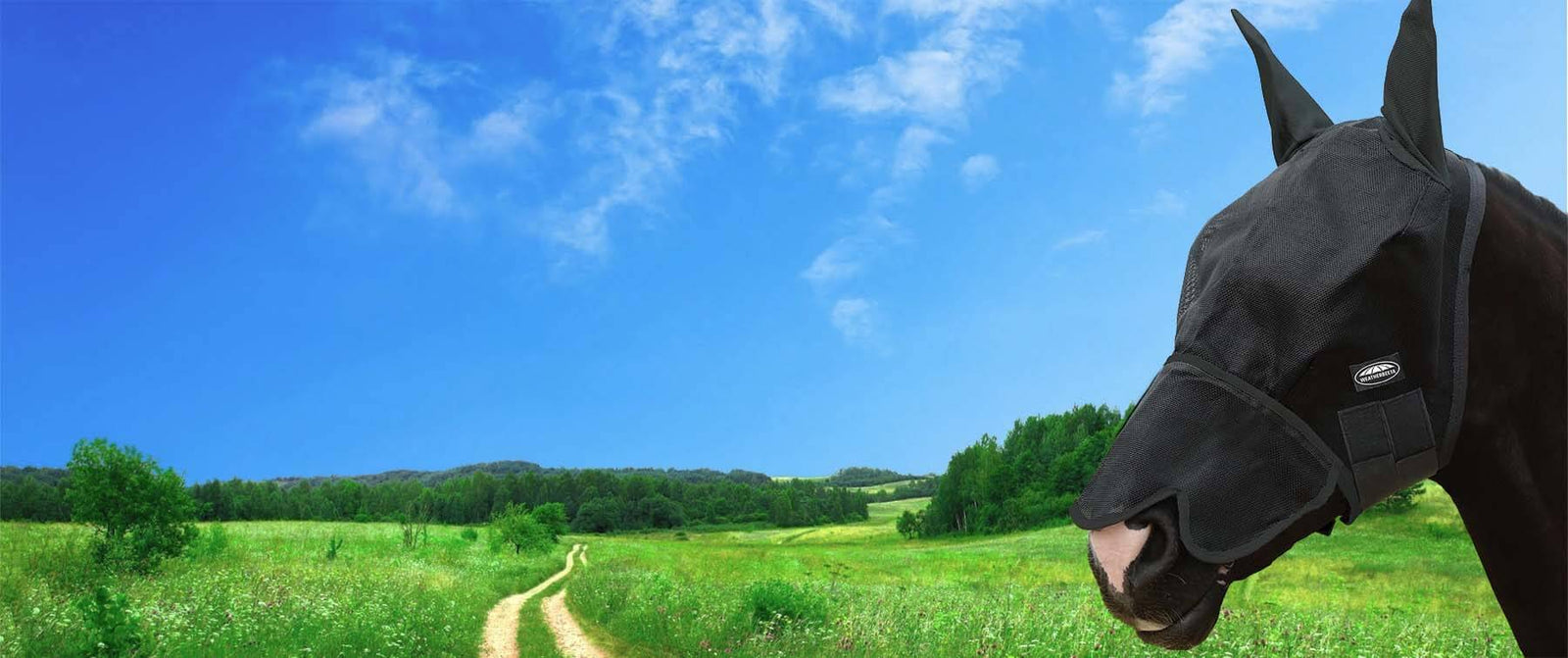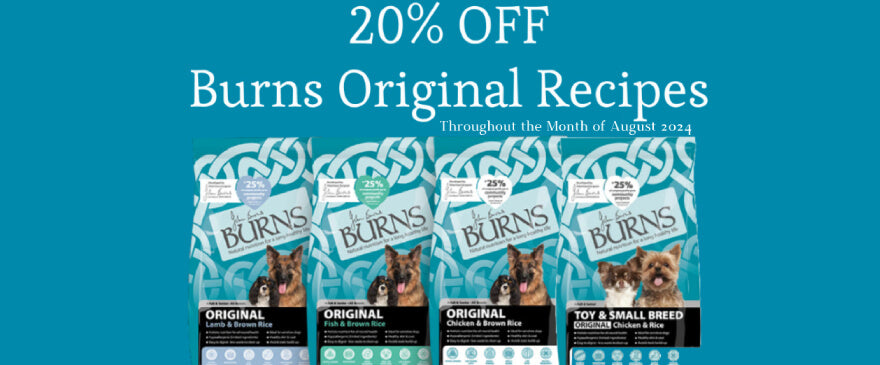FREE SHIPPING OVER £49 T&C'S APPLY
Fly Season: How to Combat Pesky Bugs
June 25, 2018 4 min read 0 Comments

During the summer months, there is one creature that just never seems to leave you or your horse alone: the fly. Whether it’s a house fly, stable fly, or horse fly; they just don't seem to want to leave your horse alone. So how do you combat the never-ending tirade of flies? Here's PetnPony's guide to fly season and how to keep your horse happy and free of flies.
Types of Flies and How to Prevent Their Bites
There are many different types of fly, and each one poses a different type of issue, some create painful bites, other’s swarm constantly; some live outside and some live in the stables. Therefore, it is best to know how to prevent and solve each individual fly so that you can make sure you horse is happy.

Midges are incredibly annoying tiny flies, they tend to live in swarms which come out around dawn and dusk to feed. Their preferred breeding ground is somewhere damp and stagnant (e.g. ponds and damp greenery) as they lay their eggs in the still water there.
When a Midge bites a horse, the saliva of the fly creates an allergic reaction which makes the area of the bite very itchy. Usually, the midge will bite the horse on the back of their mane or at the top of the tail, the very itchy bites will cause your horse to repeatedly try and ease the itch by rubbing the affected area onto something causing their skin to become raw and infected, this is called sweet itch.
The best way to prevent Midges is too make sure there are no stagnant water sources ne ar or on your horse’s grazing ground, as they can no longer reproduce if their breeding ground is removed. To prevent a horse being bombarded by midges, first make sure they are inside at dusk and dawn and this will dramatically reduce the chance of your horse being bitten. However, using light fly sheets and a midge repellent such as Fly Away Deflect, will repel them and prevent any bites from occurring.
ar or on your horse’s grazing ground, as they can no longer reproduce if their breeding ground is removed. To prevent a horse being bombarded by midges, first make sure they are inside at dusk and dawn and this will dramatically reduce the chance of your horse being bitten. However, using light fly sheets and a midge repellent such as Fly Away Deflect, will repel them and prevent any bites from occurring.

Stable flies are especially aggravating creatures and they thrive on rotting rood, manure and soiled bedding. As you can guess by their name, they live in the stables and will lay their eggs on anything moist laying around.
Their bites are very painful, and the fly will continue to bite until it is completely satisfied, creating a lot of irritation, and leaving painful wheals with scabs on the centre.
To prevent stable fly bites, make sure you keep the stable as clean as possible, remo ving possible breeding grounds, and keep the manure pile away from the stable as a further precaution. To reduce the number of flies inside the stable, attach fly strips to the sides of the stables, and don’t forget to use a repellent spray on your horse to prevent the painful bits, if your horse gets spooked easily by a spray try a roll on such as the Fly Away Citro Free Roll On.
ving possible breeding grounds, and keep the manure pile away from the stable as a further precaution. To reduce the number of flies inside the stable, attach fly strips to the sides of the stables, and don’t forget to use a repellent spray on your horse to prevent the painful bits, if your horse gets spooked easily by a spray try a roll on such as the Fly Away Citro Free Roll On.

These are probably the most common type of fly and they are the little nuisances that love to sit around your horse’s eyes and nose, however, they are the only fly on the list that doesn’t bite, only buzzes around constantly.
They like to breed in fresh manure, so mucking it out often can help prevent them  breeding. In terms of keeping them away from your horse’s face, a fly fringe or fly mask is the perfect way of preventing them from annoying your horse. Try the Horseware Fly Mask with Vamoose, with built in fly repellant, it provides the perfection shielding from these flies.
breeding. In terms of keeping them away from your horse’s face, a fly fringe or fly mask is the perfect way of preventing them from annoying your horse. Try the Horseware Fly Mask with Vamoose, with built in fly repellant, it provides the perfection shielding from these flies.

Black flies are a real nuisance to a horse, as they love to feed on their faces and necks leaving painful scabs which attract more flies and amplify the situation further. They are especially irritating as they love to feed on the ears of a horse, which drives the horse crazy.
They love to breed in flowing water and they breed very fast, so one way to  prevent black flies feeding on your horse is to keep their paddock away from running water such as streams or rivers. They also love to appear at dusk and dawn, much alike midges, so keeping your horse inside at those times and using an effective fly repellent and fly mask, especially an ear mask, is the best bet to keeping your horse safe from these annoying flies.
prevent black flies feeding on your horse is to keep their paddock away from running water such as streams or rivers. They also love to appear at dusk and dawn, much alike midges, so keeping your horse inside at those times and using an effective fly repellent and fly mask, especially an ear mask, is the best bet to keeping your horse safe from these annoying flies.

Horse Flies are the most notorious of all the pesky flies, they can grow to lengths of 2.5 cm and tend to feed alone. They tend to live in warm, light muggy areas such as woodland and have very nasty bites.
If a horse fly bites your horse, it will be very easy to spot as it will swell and leave a characteristic pimple like mark with an ulcer in the centre. They will usually feed on the underside, legs, neck, and withers, and you too if you happen to be near!
Horse Flies are very resilient, and you will need more than just a homemade  repellent to fight off these feisty flies! For best results and for ultimate protection against horse flies, try Fly Away Max Strength, which repels all other flies too. However, horse flies are afraid of the dark, so whilst your
repellent to fight off these feisty flies! For best results and for ultimate protection against horse flies, try Fly Away Max Strength, which repels all other flies too. However, horse flies are afraid of the dark, so whilst your horse is in their stable they will be safe from them. A fly sheet will also help for when your fly is outside, especially one such as the Amigo Vamoose Evolution, which has a built-in fly repellent into the rug.
horse is in their stable they will be safe from them. A fly sheet will also help for when your fly is outside, especially one such as the Amigo Vamoose Evolution, which has a built-in fly repellent into the rug.
How to Treat Horsefly Bites
If your horse has only received a single bite, use an ice pack or salt water (about one teaspoon of salt for every 500ml) bath to soothe the bite.
On the other hand, if your horse has received multiple bites, try using an anti-bacterial shampoo like NAF Tea Tree Oil Shampoo to remove any irritants and  cool the inflamed area down. To p
cool the inflamed area down. To p revent your horse rubbing at the affected area, use an anti-itch gel, such as NAF Love the Skin D-Itch Ointment to soothe the bites.
revent your horse rubbing at the affected area, use an anti-itch gel, such as NAF Love the Skin D-Itch Ointment to soothe the bites.
Items mentioned:
Also in PetnPony Blog

Chronic Kidney Disease in Cats - Royal Canin
February 24, 2025 3 min read 0 Comments
Cats - like dogs and humans - have two kidneys situated in the abdomen close to the spine and last rib. They are vital organs, continually filtering toxins and waste materials from the blood and producing urine to enable those toxins to be excreted from the body.

Fuel Their Joy, Feed Them Natural: Discover Premium Dog Foods at PetnPony
August 08, 2024 4 min read 0 Comments

20% Off Burns Original Recipes at PetnPony this August! Natural, Hypoallergenic, and Delicious!
August 05, 2024 3 min read 0 Comments

